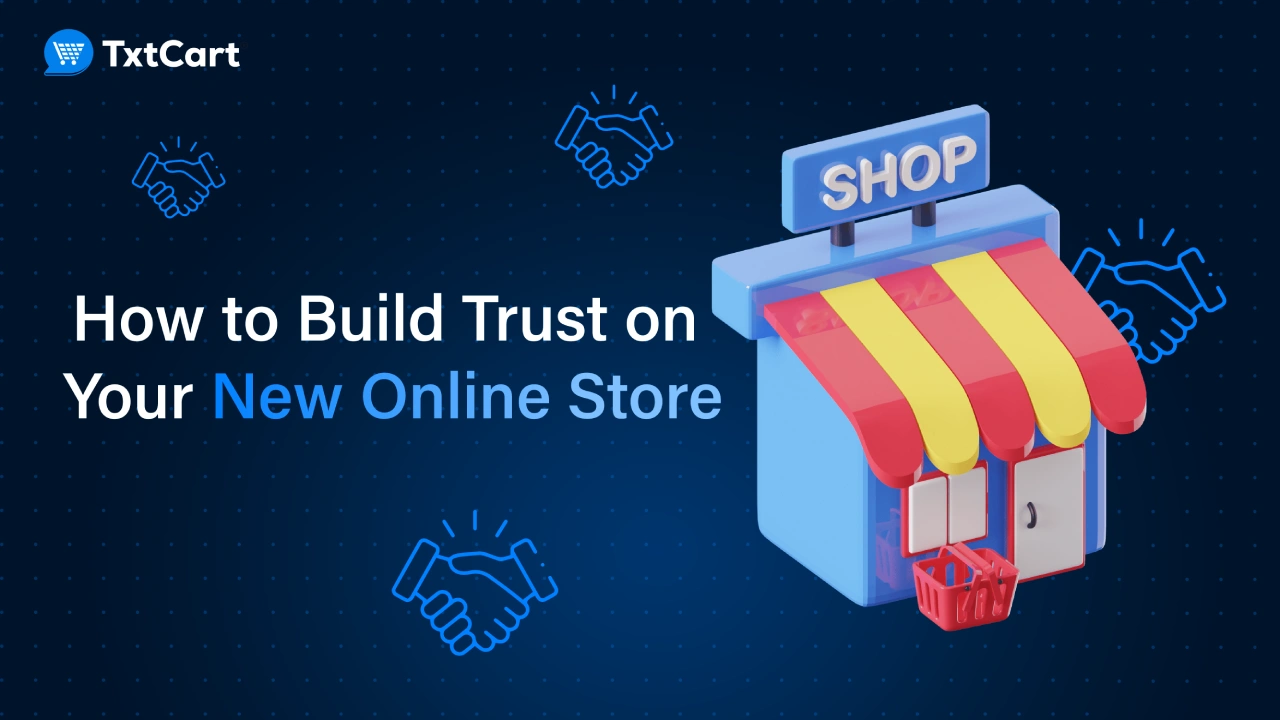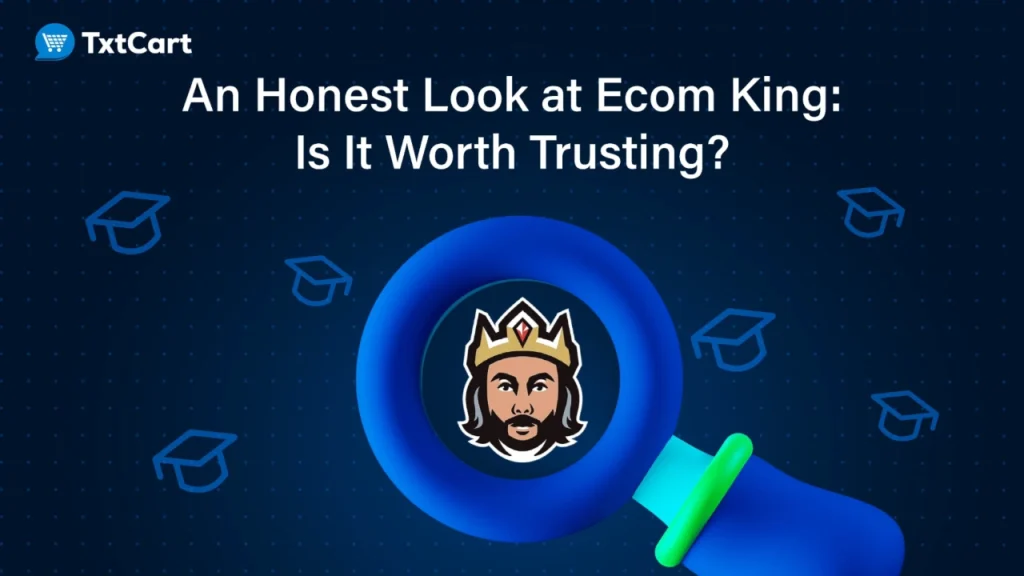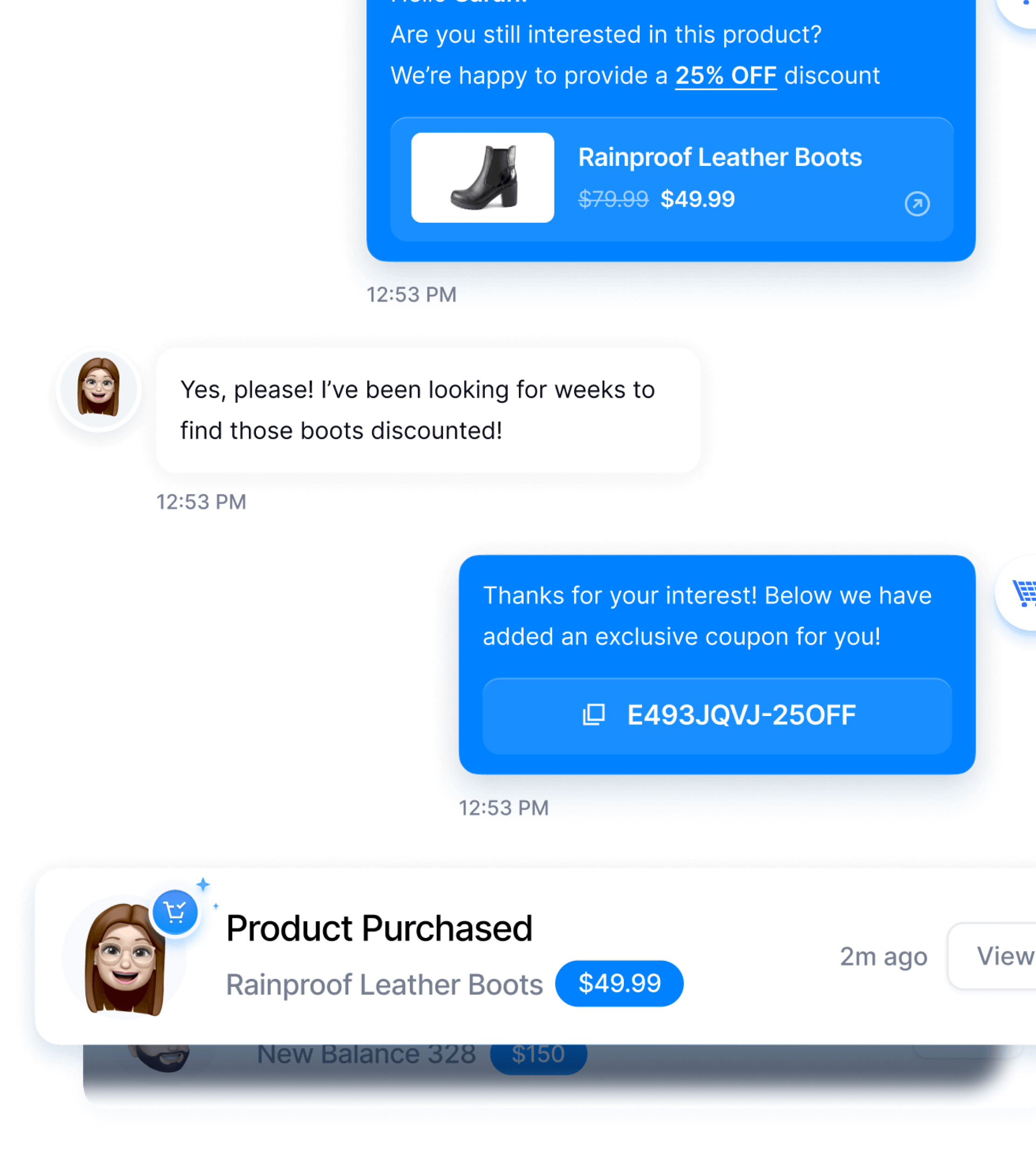Launching a new online store comes with excitement—and a fair share of challenges. One challenge often overlooked? Earning customer trust. Without it, even the best products, competitive pricing, and a sleek design won’t drive sales. Therefore, in today’s competitive market, building trust in eCommerce is crucial for any new online business aiming for success.
This guide will help uncover:
- The biggest concerns that make online shoppers hesitate.
- Common trust issues that could be hurting your ecommerce site.
- Effective solutions to turn visitors into loyal customers who keep coming back.
Let’s get started.
🚨 P.S., Building trust takes time, but TxtCart’s conversational SMS accelerates this process by providing instant support, transparent communication, and personalized follow-ups—key trust elements for any new online store. Thousands of brands use our AI to create connections that convert browsers into loyal customers.
CROSSNET, a popular sports brand, used TxtCart’s 2-way SMS to generate $453,185 in revenue, drive 5,389 customer conversations, and recover over 3,000 orders in just 8 months.
$453,185
SMS Attributed Revenue
17.6x
SMS Attributed ROI
3,000+
Recovered Orders

“We’ve used A LOT of platforms, but what stands out about TxtCart is how EASY it is to get started. Setup in 5-10 minutes, intuitive to use, and the product delivers big results.”
Co-Founder, CROSSNET
TL;DR
- 🔊 You Don’t Have Enough People Talking About Your Store
- Establish social proof through customer reviews, testimonials, and social media engagement.
- Showcase influencer partnerships and highlight satisfied customers’ experiences.
- Share case studies and encourage referrals to build credibility and boost visibility.
- 👋 You’re Not Making a Great First Impression
- Use high-resolution images and create a fast-loading, user-friendly website.
- Add trust badges, clear return policies, and secure payment options.
- Send personalized welcome messages using TxtCart to set a positive tone.
- 📞 You’re Difficult to Get in Touch With
- Provide clear contact information on your website, social media, and search engines.
- Use live chat or AI-powered tools like TxtCart for instant responses.
- Stay reachable after sales with tracking updates and prompt query resolution.
- 🌍 You Don’t Have a Strong Enough Presence on the Internet
- Maintain an active presence across all relevant social media platforms.
- Leverage TikTok for engaging content and showcase user-generated content (UGC).
- Ensure consistent branding across every platform to boost recognition and trust.
- 🗣️ You Aren’t Straightforward or Forthcoming with Answers
- Create a clear FAQ section and provide thorough, honest information.
- Respond promptly across all channels—social media, reviews, and emails.
- Use TxtCart to answer customer queries instantly and build confidence.
- 🔄 You’re Failing to Follow Up Pre, Mid, and Post-Purchase
- Use TxtCart for real-time support and upselling during the pre-purchase stage.
- Provide timely order and shipping updates mid-purchase.
- Send thank-you messages and offer discounts post-purchase to encourage repeat sales.
- ✅ Lack of Reassurance at Checkout
- Display trust badges, offer secure payment options, and highlight clear return policies.
- Share real-time social proof, like notifications of others buying the same product.
- Use TxtCart to send cart abandonment reminders and recover lost sales.
- 📄 Your Product Information Is Unclear
- Use benefit-focused descriptions, high-resolution images, and clear specifications.
- Include video demonstrations to showcase products in action.
- Highlight customer reviews and success stories to boost trust and engagement.
4 Major Concerns Online Shoppers Have
Trust is the foundation of every online shopping experience. Without it, even the best deals won’t convert visitors into buyers. In fact, 81% of consumers say brand trust directly influences their purchasing decisions, and 87% are willing to pay morefor brands they trust.
For ecommerce businesses, understanding and addressing these major customer concerns is key to building loyalty and driving sales:
- Privacy and security: Shoppers worry about sharing sensitive data like payment details. A lack of visible trust signals or an SSL certificate can leave online customers questioning the safety of their online transactions.
- Transparency and authenticity: Customers seek clear contact details, transparent policies, and genuine customer reviews and testimonials. Without them, customers may question the legitimacy of the online store.
- Product representation: Unclear images or vague descriptions can make customers hesitant to buy. Well-crafted product pages with high-quality images and detailed product descriptions help set the right expectations.
- Customer service and support: Slow responses to customer queries or poor support can damage customer confidence. Reliable, timely customer service is essential for addressing concerns and fostering customer loyalty.
Read Next: 7 eCommerce Mistakes Destroying Sales (& How to Fix Them)
Why Customers May Not Trust Your Online Store and How to Address These Issues
Even with the best ecommerce website, certain factors can make online shoppers feel concerned about buying from a new online store. Identifying these trust gaps is the first step; fixing them is what turns your visitors into loyal customers and drives consistent sales.
1. You don’t have enough people talking about your store (yet)
Solution: Establish Social Proof
One major barrier to earning consumer trust in a new online store is silence—when no one’s talking about your brand yet. Social proof changes that, reassuring online shoppers of your credibility. In fact, 92% of consumers trust recommendations from others over branded content.
The most common types of social proof are:
- User reviews
- Customer testimonials
- Social media engagement
- Vote of approval from an influencer or authority
The infographic poster store Pop Chart spotlights logos of famous clients and a testimonial on their homepage:
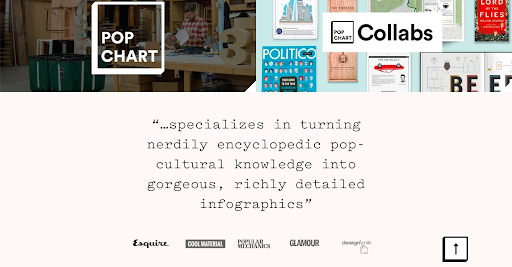
Undoubtedly, user reviews & testimonials, as well as social media, are the easiest first steps to aim for as a new store. Here’s how to get people talking and make your online store feel trustworthy:
- Request customer feedback: Consider personally requesting satisfied customers to share a few kind words or a picture, then post it on social media and your website.

- Engage on social media: Post content that will get your customers’ thumbs stopping. More engagement—likes, comments, and shares—means stronger social proof for your brand.
- Leverage referrals: Ask your satisfied existing customers for referrals to increase your reach and then engage them to try and get more people talking about your store.
- Share case studies: Highlight success stories on your website with quotes from real customers. This adds credibility and showcases how your products solve real problems.

2. You’re not making a great first impression
Solution: Optimize user experience for a lasting first impression
A strong first impression is essential for building customer trust. From visuals to functionality, every detail matters when shaping how online shoppers perceive your brand.
But creating a strong first impression goes beyond just website design. A personalized message can also play a major role in leaving a lasting impression and setting the tone for future interactions. With TxtCart, you can send automated welcome messages to first-time buyers or subscribers, reinforcing the positive experience they’ve had on your site.
Here are other powerful ways to create a lasting first impression:
- High-resolution photography: Crisp, clear images showcase product quality and help reduce shoppers’ perceived risk. High-quality visuals build confidence and make products more appealing.

- Fast-loading website: Half of all visitors leave if a page takes up to 3 seconds to load. Prioritize site speed to ensure smooth navigation and a frustration-free experience—key for keeping potential customers engaged.
- “As Featured In/As Seen In” section: Highlighting media mentions, partnerships, or endorsements builds credibility for your eCommerce brand. Take OrganiGrowHairCo, for example—their ‘As Seen In’ section features press highlights from Vogue and FOX11 News, reinforcing their authority in the haircare industry.
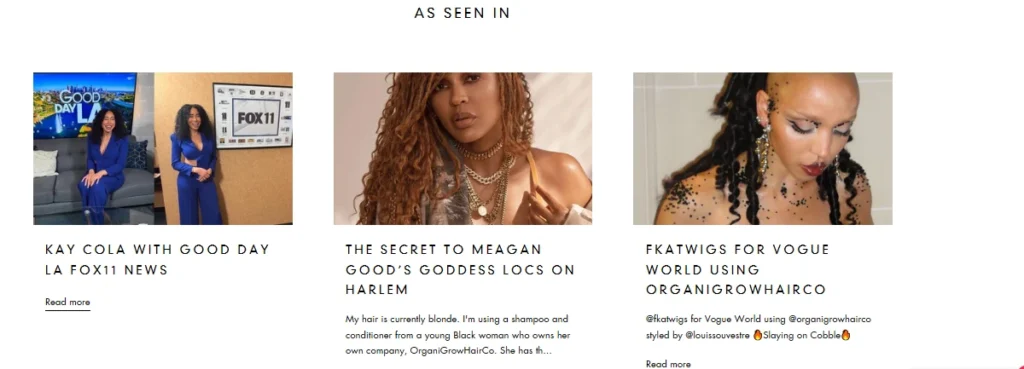
To further leave a great impression, Organi deployed an AI-powered sales agent to answer customer queries and follow-up on abandoned carts all while being 32x cheaper than a human. As a result they recovered thousands of orders while remaining available to customers 24/7, even when human agents clocked out.
Organi Grow Hair, a vegan and organic haircare brand, used TxtCart’s 2-way SMS to recover $25K monthly, drive 42% reply rates, and deliver 9,500+ personalized campaign orders.
$1,248,723
Revenue Attributed to SMS
26,241+
Orders Attributed to SMS
16.9x
SMS Attributed ROI

“TxtCart has really built something special and we’ve been a fan for over 3 years. The organic conversations pair so well with our organic products, providing additional revenue and customer satisfaction.”
Founder, Organi Hair
- Trust badges: Displaying trust seals like SSL certificates or secure payment icons assures customers that their sensitive data is protected during online transactions.
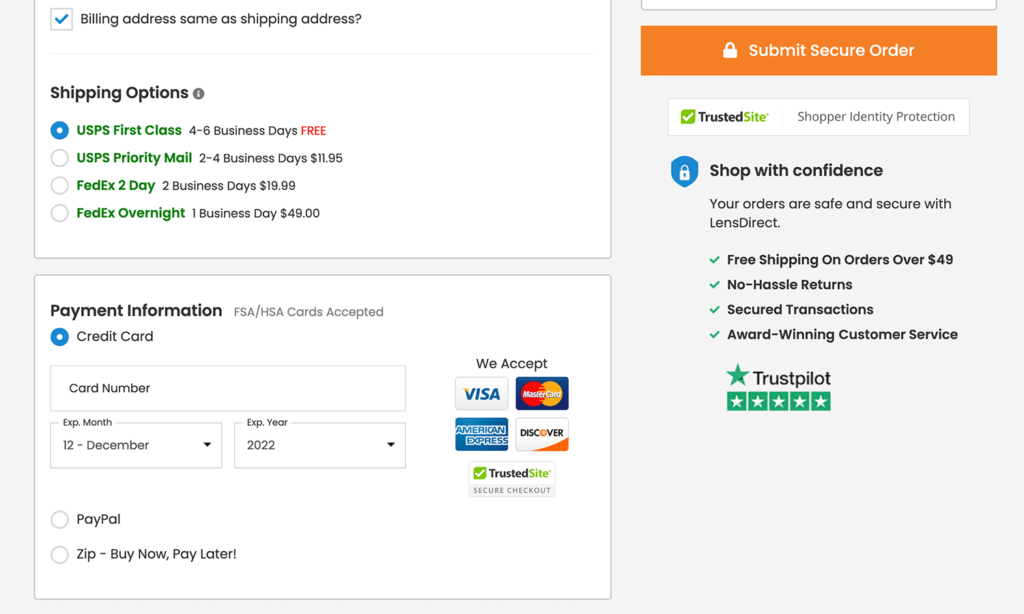
- Product reviews: Genuine customer reviews on product pages provide essential social proof, helping online shoppers feel secure about their purchase decisions.
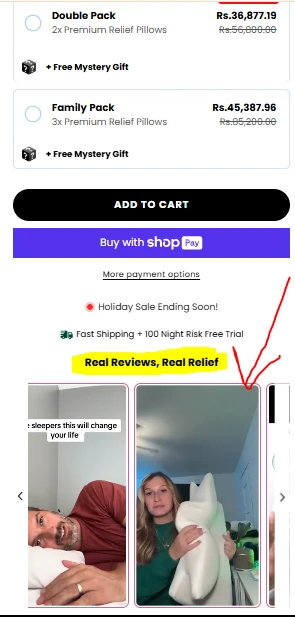
- Free shipping: Offering free shipping reduces purchase hesitation and increases customer loyalty by eliminating unexpected costs.
- Money-back/performance guarantee: A clear return policy or performance guarantee reduces risk, encouraging prospective customers to shop with confidence.

- Product-related certifications: Showcase recognized certifications to show your commitment to product quality, safety, and industry compliance. This reassures visitors that your products meet trusted standards and boosts customer confidence.
Some common examples of product-related certifications are:
| Product Category | Relevant Certifications/Licenses |
|---|---|
| Health & Supplements | FDA-Approved Badge, Clinically Tested, GMP (Good Manufacturing Practices) Certified |
| Organic & Food Products | USDA Organic Certification, Non-GMO Project Verified, Fair Trade Certified |
| Electronics & Consumer Goods | CE Mark (Europe), FCC Certification (U.S.), RoHS Compliance |
| Skincare & Cosmetics | Leaping Bunny Certification, Hypoallergenic Tested, EU Cosmetic Regulation Compliance |
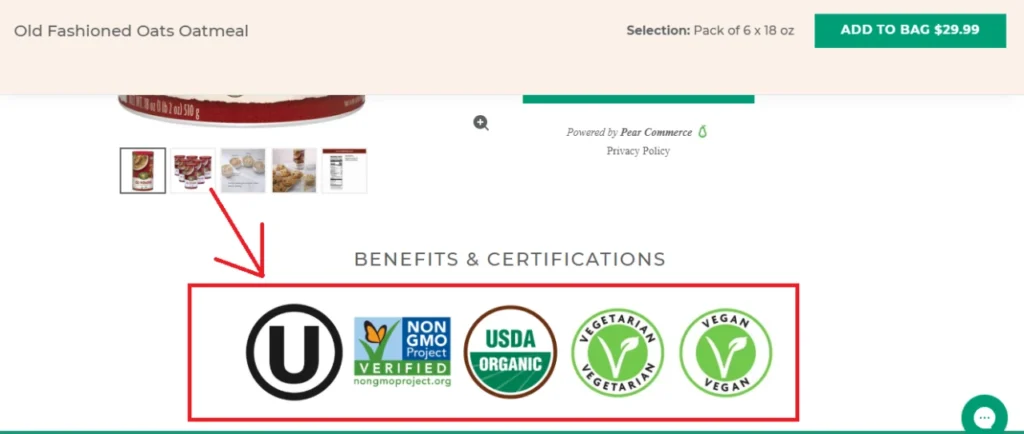
- Data-backed claims: Support product benefits with statistics, research, or studies to enhance credibility and help build trust in e-commerce.
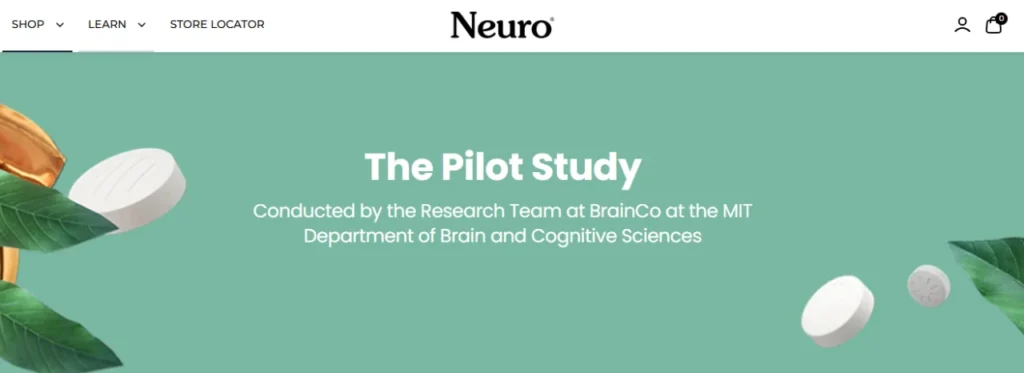
3. You’re difficult to get in touch with
Solution: Improve customer accessibility and response time
Being hard to reach creates a poor user experience and damages customer trust. When visitors struggle to find contact information or get timely responses, it signals that your brand isn’t prioritizing communication—instantly triggering skepticism.
This is where tools like TxtCart’s conversational AI come in handy. Acting like a real-time sales agent—but at 32x less cost—TxtCart instantly handles customer queries on demand, ensuring quick responses that enhance customer confidence and strengthen engagement.
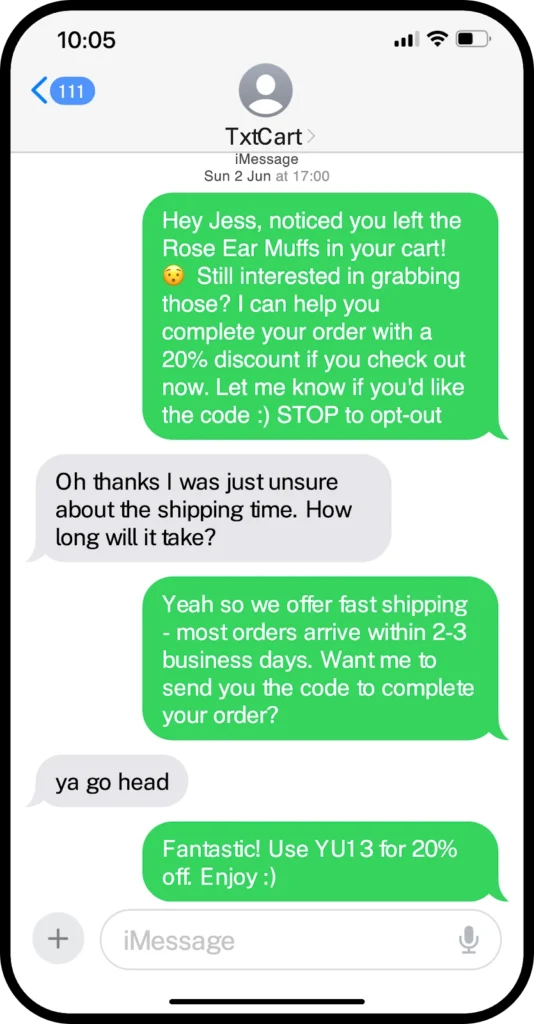
To improve accessibility, you can use multiple ways for customers to contact you:
| On your website | Display essential contact details like an email address, phone number, mailing address, or a contact form with a clear commitment to respond promptly. |
| On social media | Respond to messages quickly and connect your social media accounts to your website for a unified brand presence. |
| On search engines | Set up a Google My Business listing to display your address, phone number, and business hours, making your contact details easily accessible through search. |
📌Pro tip: Stay highly accessible even after the sale. Provide customers with real-time tracking updates, regular delivery status notifications, and prompt responses to any questions. This help build customer trust and strengthens customer loyalty, ensuring a positive post-purchase experience.
4. You Don’t Have a Strong Enough Presence on the Internet
Solution: Build a strong, consistent multi-platform presence
Even the best ecommerce store can feel invisible if no one knows it exists. If customers can’t find your brand across different platforms, it limits your reach. To build trust in ecommerce, your brand needs to be everywhere your audience is—consistent, engaging, and always within reach.
Here’s how to get noticed and stay top of mind:
- Optimize your social media: Stay active on all relevant social media platforms by sharing content that grabs attention, sparks conversations, and keeps people coming back. And don’t forget to link all your social media accounts to your website for a seamless, unified brand vibe.
- Leverage TikTok’s viral power: If you’re not on TikTok yet, you’re missing out. It’s where trends explode. Show off your products with fun, relatable content—think behind-the-scenes clips, quick demos, or hopping on trending challenges. It’s perfect for turning casual scrollers into loyal customers.
- For example, Vegamouruses TikTok to showcase product demos, real success stories, and quick hair care hacks that solve user issues and build trust through relatable content.
- Keep your branding consistent: Your brand should look and feel the same everywhere. From logos to colors to messaging, consistency builds recognition and customer trust. Tools like Canva orBrandfolder can help keep everything aligned without the headache.
- Show off User-Generated Content: UGC is one of the most powerful forms of social proof. Seeing real people use and enjoy your products creates instant customer trust—even more than traditional reviews. To maximize the impact showcase UGC prominently on your homepage, product pages and social media accounts.

📌 Pro tip: Platforms like inBeat.co and Heepsy can help connect with influencers who align with your brand. If that feels like too much effort (or too expensive), try MakeUGC.ai. It’s an affordable way to generate AI-powered UGC videos to showcase product demos, reviews, or announcements.
5. You Aren’t Straightforward or Forthcoming with Answers That Customers Need
Solution: Foster transparency and prompt communication with customers
Don’t forget we’re still living in the information age, and customers are more empowered than ever. In order to do well, you must keep your customers’ best interests at heart. That means being upfront about product details, pricing, or even sourcing practices., answering all customer queries promptly and very importantly, not making false promises.
If customers feel like you have something to hide or aren’t forthcoming enough, they won’t trust you – and that will usually reflect in their reviews as well.
Some best practices for clear and transparent communication are:
- Have a comprehensive FAQ section on your website: This will show customers that you’re forthcoming with information and it will also save you the time of answering the same queries again and again.
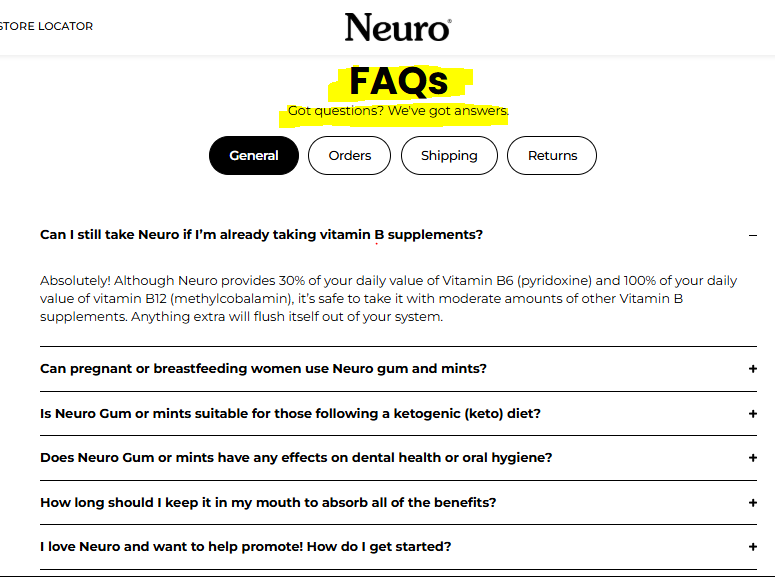
- Use a chatbot or live chat: A chatbot powered by AI can handle basic queries instantly, while live chat ensures real-time support. However, in the case of a live chat, you need to make sure that a team member is truly available during your promised hours.
- Respond promptly to queries: Customer queries can come through on social media, your reviews section, email or a phone number if you’ve listed it – it’s a lot, but you need to cover your bases and respond with thorough answers in good time.
That’s where TxtCart steps in as your secret weapon. Its AI is trained on your store’s info, ready to handle customer queries instantly—like a virtual sales rep that’s always on call but 32x cheaper. Quick answers = happy, confident customers who are more likely to buy (and come back for more).

Read Next: 10 Reasons Why You Should Start Text Newsletters for Marketing
6. You’re Failing to Follow Up Pre, Mid, and Post-Purchase
Solution: Engage customers at every stage of their journey
Following up with customers isn’t just about post-purchase thank-yous—it’s about staying connected through every phase of their journey. Ignoring key touchpoints can weaken customer trust, reduce engagement, and leave opportunities for upselling untapped.
Here’s how to keep the engagement flowing at every stage:
- Pre-purchase: Before customers hit “buy,” they often have questions about sizing, features, or shipping—missing the chance to respond can cost you the sale.
TxtCart solves this with conversational AI, seamlessly answering customer queries in real-time. It also boosts sales by suggesting relevant add-ons or complementary products, effortlessly increasing average order value
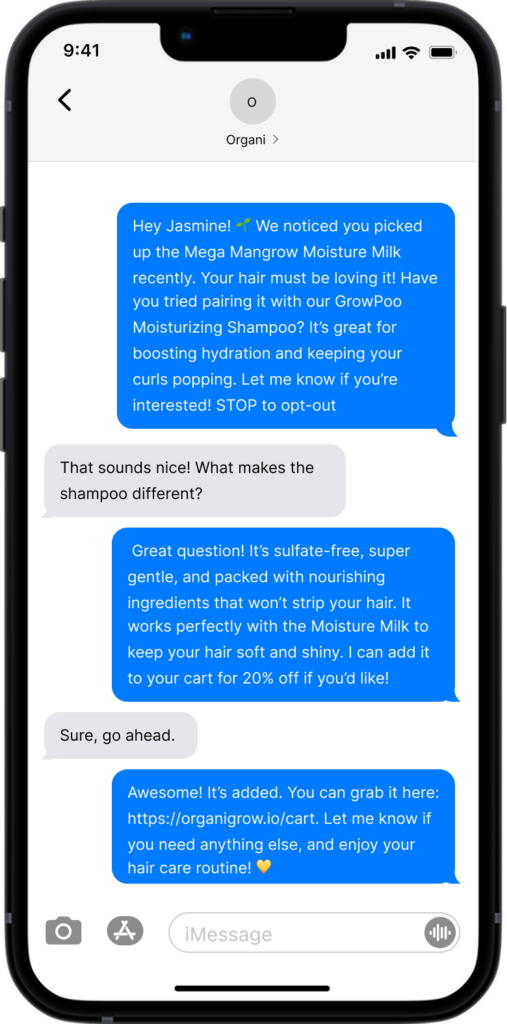
- Mid-purchase: Once the order is placed, keeping customers in the loop is key to maintaining their confidence. Send real-time updates on order status, shipping confirmations, and delivery tracking. This reduces customer concerns and enhances the overall online shopping experience.
- Post-purchase: After the sale, the focus shifts to building customer loyalty. Send a personalized thank-you message through email or SMS (again, TxtCart can help automate this!). Sweeten the deal by offering a discount on their next purchase or sharing helpful tips on how to use their new product. This encourages repeat business.
Read Next: eCommerce Upselling Guide From 9 Figure Brands
7. Lack of Reassurance at Checkout
Solution: Streamline your checkout to reduce cart abandonment
The checkout stage is where doubts can creep in, causing potential buyers to hesitate or abandon their carts altogether. At this critical moment, a smooth, secure, and reassuring checkout experience helps drive successful transactions and creates a sense of security for both new and returning customers.
Here’s how to provide reassurance and reduce cart abandonment:
- Display trust badges: Highlight secure payment symbols and certifications at the checkout to assure customers that their customer data and payment information are protected.
- Offer protected shipping options: Give buyers the confidence by offering package protection if issues arise during delivery.
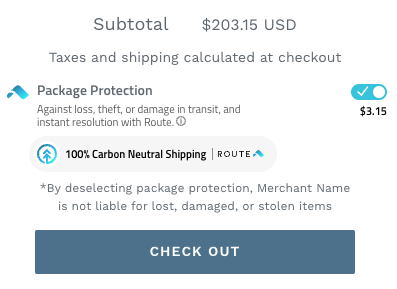
- Request phone numbers for shipping updates: Ensure customers stay informed by providing real-time shipping notifications
- Provide popular payment options: Offer secure choices like Shop Pay, Google Pay, PayPal, Mastercard, and Visa to ensure smooth transactions.
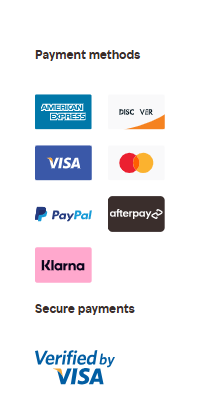
- Highlight refund and guarantee policies: Clearly communicate your refund policy and showcase any money-back guarantees to ease hesitation.
- Add social proof popups: Share notifications showing how many people are purchasing the same product, leveraging word of mouth and creating urgency.
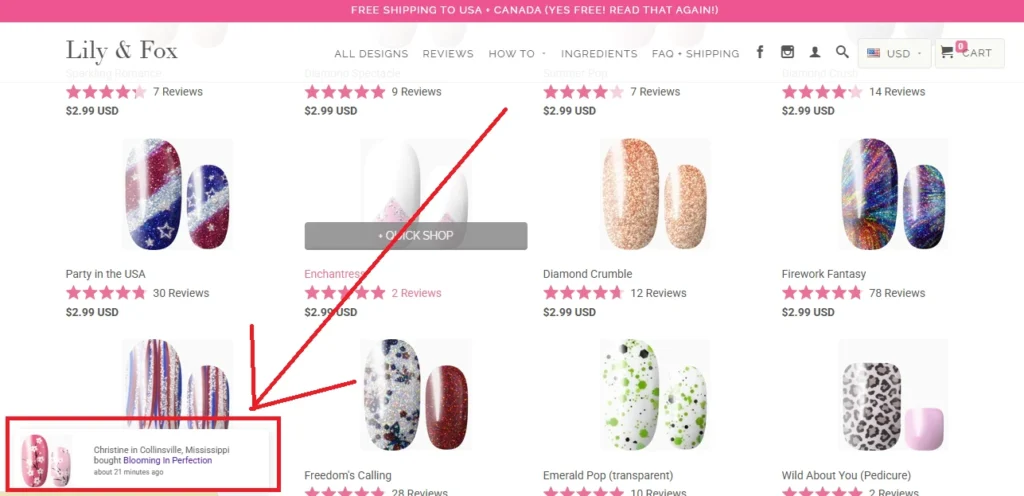
- Showcase testimonials at checkout: Display success stories or customer reviews to reinforce trust and encourage conversions during checkout, the final decision-making stage.
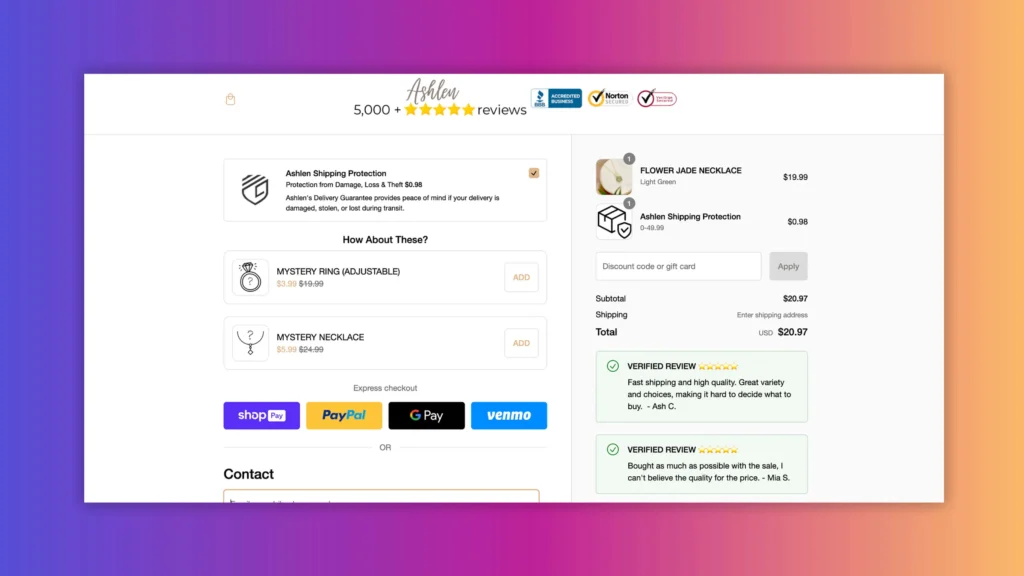
P.S. TxtCart can take your checkout strategy a step further. If a customer abandons their cart, TxtCart automatically sends personalized SMS reminders, encouraging them to complete their purchase. This proactive re-engagement helps you recover lost sales.

Take a Look at These Results:
- JoyRide recovered over $1 million in revenue using TxtCart
- TxtCart helped Toroe Eyewear recover 800 orders, generating over $60,000
- Chaser recovered 54% of abandoned carts, generating over $207,000 with TxtCart
7. Your Product Information Is Unclear
Solution: Offer detailed product details, including images
When product information lacks clarity, customers are left guessing—and hesitation often leads to cart abandonment. For successful ecommerce businesses, clear and benefit-driven product pages help establish trust. The goal is to make information easy to digest while showing how your product adds value to their lives.
Here’s the difference between a weak and strong product page:
❌ Bad Example – A Surface-Level Product Page
This isn’t outright “bad,” but it’s not optimized for conversion:
- A generic product description that only lists features, without connecting them to benefits.
- ❌ Example: “Lightweight, durable running shoes with flexible cushioning.”
- What’s missing? Who is this for? How does it feel? Why does it matter? Add those in and…
- ✅ “Move all day with cloud-like cushioning and breathable mesh that keeps your feet cool. Perfect for long commutes, all-day wear, or setting a new personal best—without the bulk.”
- Images focus only on the product, not the experience.
- Example: Only standard white-background shots, no lifestyle or comparison images.
- What’s missing? Customers don’t just want to see the product; they want to visualize how it fits into their life.

- Overwhelming or unclear specifications.
- Example: “EVA midsole, rubber outsole, TPU overlays.”
- What’s missing? Instead of raw materials, buyers want clarity: “Responsive EVA midsole absorbs impact, reducing strain on your feet during long runs.”
- Social proof exists, but it’s not persuasive.
- Example: Star ratings with no context or detailed reviews.
- What’s missing? Show reviews that address common concerns (fit, durability, comfort over time).
🛑 Result: Customers hesitate because they don’t see how the product solves their problem or fits their lifestyle.
✅ Good Example – A High-Impact, Persuasive Product Page
- Benefit-driven product description that paints a picture
- “Experience all-day comfort with breathable mesh and memory foam—perfect for long walks, busy workdays, or casual outings.”
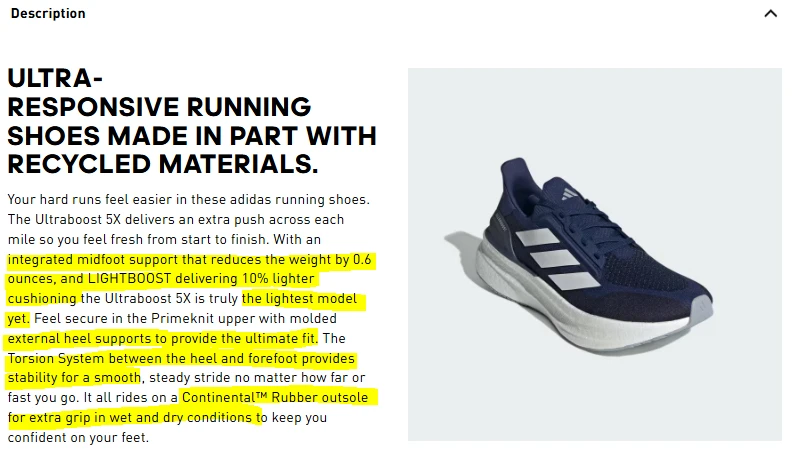
- Clear, visual presentation
- Multiple high-resolution images from different angles, including lifestyle shots and close-ups showing the product in action (e.g., someone wearing the shoes while running, walking, traveling).

- Video demonstrations that show the product in action and highlight its real-life benefits – this is an excellent opportunity to add user-generated content (UGC) if your brand has some.
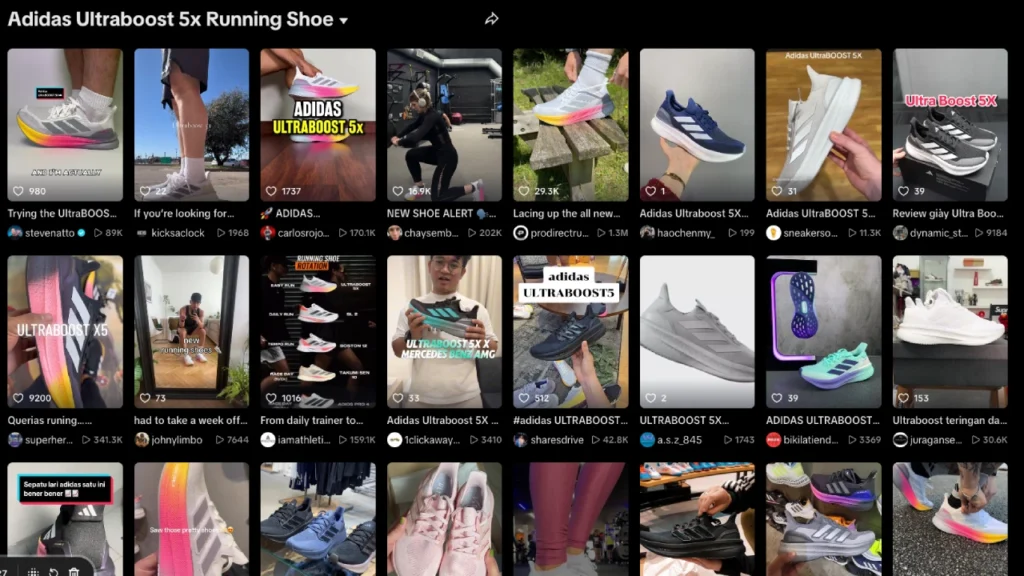
- Easy-to-read specifications: Easy-to-read bullet points for:
- Material: Lightweight, breathable mesh
- Sizes: Available in US sizes 6-12
- Care: Machine washable for easy cleaning
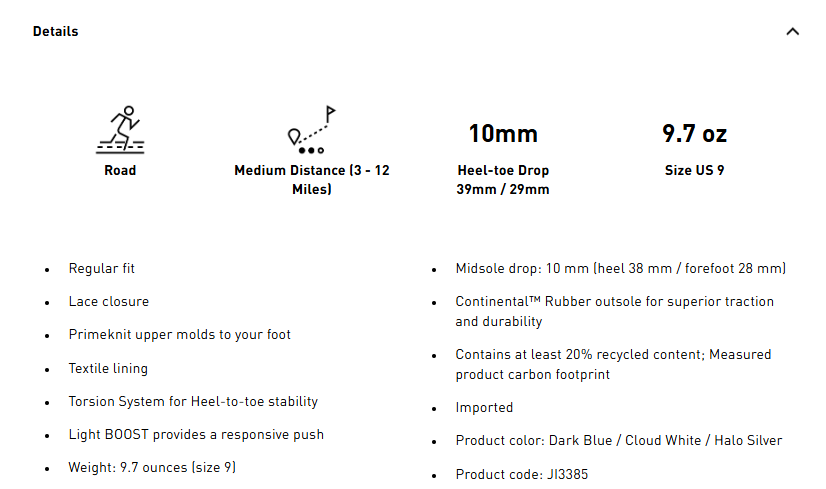
- Customer proof
- Featuring positive reviews from satisfied customers who share how the product improved their daily routine.
- Real-life customer stories with images and testimonials.
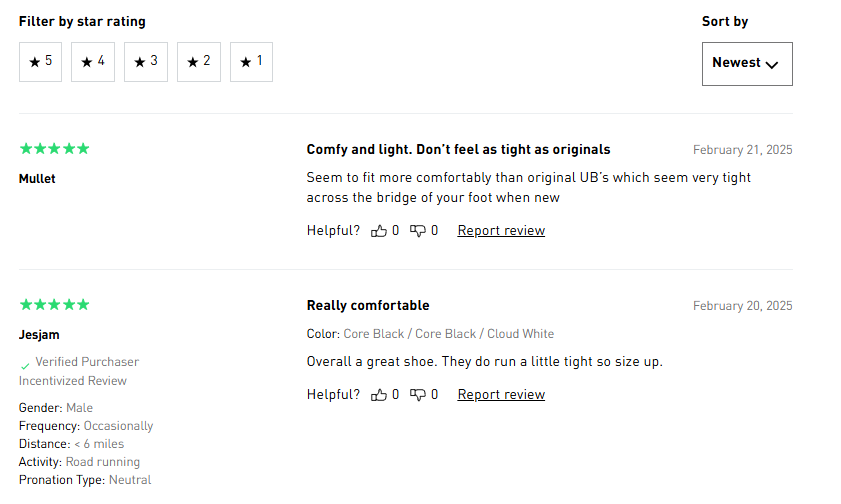
Drive more trust in your brand with an AI-powered sales agent that never sleeps
Building customer trust is essential for driving conversions in any ecommerce business. With TxtCart, you get the reliability of a 24/7 sales agent at a fraction of the cost.
From answering product questions to sending cart recovery reminders, its AI-driven automation boosts customer engagement and encourages successful transactions.
Want to try conversational SMS for free?
- Try free for 14 days
- 10x ROI guaranteed
Read Next:
